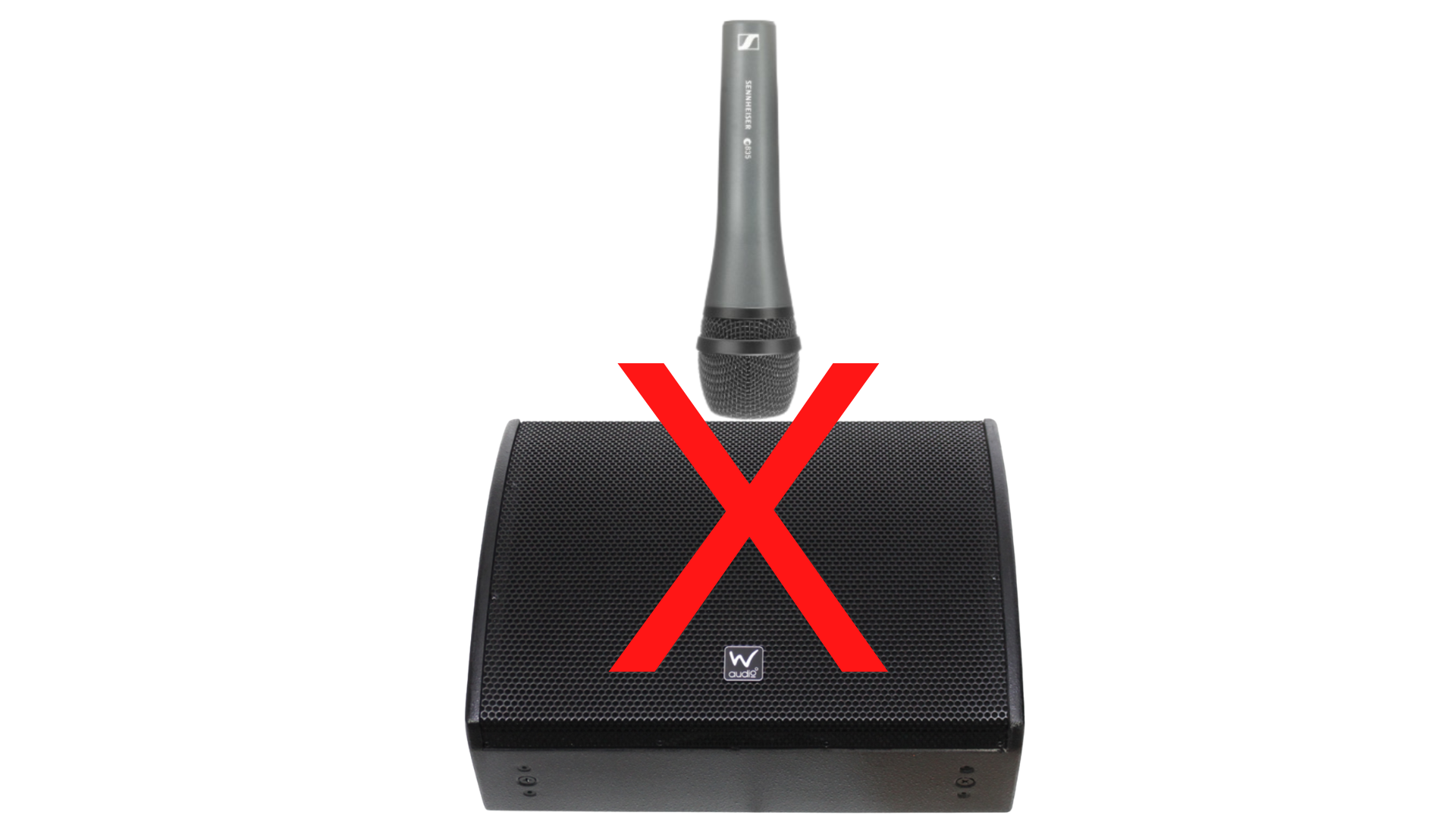What causes Feedback?
Jan 17, 2022
What causes audio feedback and how do you get rid of it?
If you’ve ever performed live or mixed sound for a live, you've probably encountered feedback at some point and you know how it can quickly ruin a great show.
What is Feedback?
Feedback is that terrible howl or shriek that can unpredictably rear its ugly head at any time through the PA and/or monitor speakers.
What causes Feedback?
Acoustical feedback happens when a microphone hears itself coming from a speaker and then picks up that sound and sends it back to the same speaker. Feedback can also be mechanical but for the purpose of this blog, I’m speaking strictly of acoustic feedback.
If you aim a microphone at a speaker it will feedback. If you are trying to get more volume from a microphone than it can give you, that can cause feedback.
There are 2 ways to get rid of feedback:
- Keep the microphone away from the speakers
- Use EQ to remove the frequencies feeding back
In both Mixing Music Live and LISTEN! I teach the best method for preventing and eliminating feedback.
Here’s the scenario-
You are a singer performing on stage and you can’t hear yourself over the band. You keep asking for the sound engineer to turn you up and suddenly a high pitched squeal comes piercing through your monitors almost taking your head off.
What happened is you ran out of headroom. Headroom is how loud you can turn up a microphone without it feeding back or how much volume you can get before distortion.
When you keep asking for more in your monitor mix or you aren’t singing loud enough to get over the stage volume, eventually the microphone will start to feedback and the only way to stop it is to turn it down or use the EQ to remove the frequencies feeding back.
EQ is one of the tools used to solve problems like Feedback in a live performance.
There’s really no way around it. In order to eliminate feedback quickly, you need to know the frequency feeding back in order to remove it with EQ.
BUT, if the sound engineer has to remove too many frequencies with EQ to stop the feedback... this can make things sound unnatural.
If the problem is that you can't hear yourself over the rest of the band, instead of asking to be turned up, try turning something else down first. Maybe the guitar needs to come down a bit or the keyboards are covering up your vocal.
If that doesn’t work and the problem is that your vocal sounds muddy and you need more clarity, knowing frequencies helps. You can ask the sound engineer to use EQ to cut some of the frequency causing the muddiness. But if that fails, when you can identify the frequency that helps your voice cut through the mix, you can ask for a little boost with the EQ in that specific frequency.
When asking for changes in your monitor mix, it’s always best to remove frequencies before adding frequencies. Often if you get rid of the problem frequencies, you won’t need to add anything and you’ll have less feedback and a better sounding monitor mix.
Tips for preventing feedback
To prevent feedback in the first place, do your best to keep the microphones from pointing directly into the speakers.

Set up the band and vocal microphones behind (upstage) from the PA speakers whenever possible.
If you are a singer, be conscious of where you are pointing your microphone. Use proper mic technique.
If you are the sound engineer, ring out the vocal microphones in the PA and monitor speakers before soundcheck.
Choose microphones with high gain before feedback. Pay attention to mic placement and monitor speakers. If you’ve got a monitor wedge directly in front of a hyper cardioid mic, you’ll probably be fighting feedback since a hyper cardioid mic allows for sound to enter opposite the capsule. A better option would be to place the monitor off to one side, slightly angled toward the microphone, or position the microphone between a pair of monitor wedges.
For musicians, be conscious of your stage volume. If the volume of your amplifiers is too loud for the space, or the PA is not powerful enough to get the vocals above the stage volume, you'll be fighting feedback all night.
If you have trouble with acoustic guitars feeding back, try a feedback buster.
Put these tips into practice to prevent and eliminate feedback from your live performances.
For more tips on avoiding feedback check out this BLOG.
By: Michelle Sabolchick







